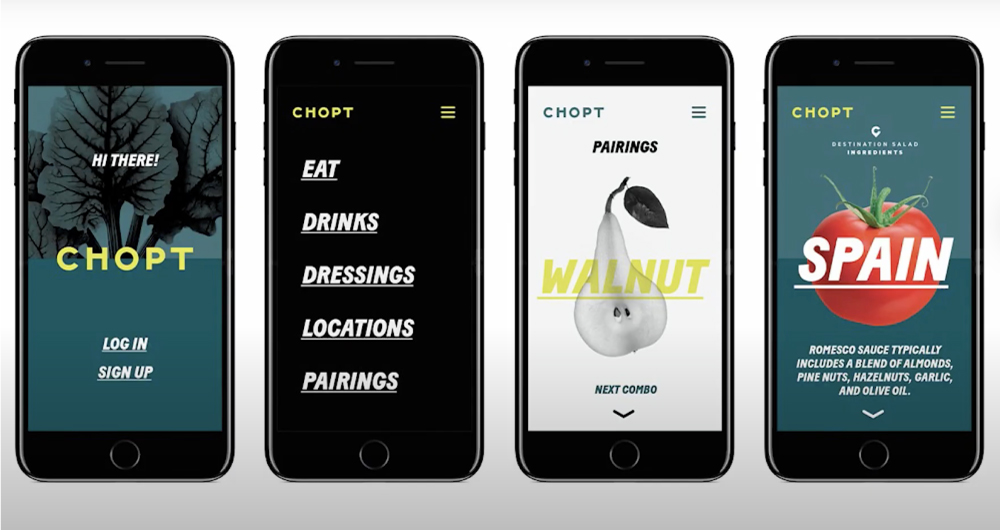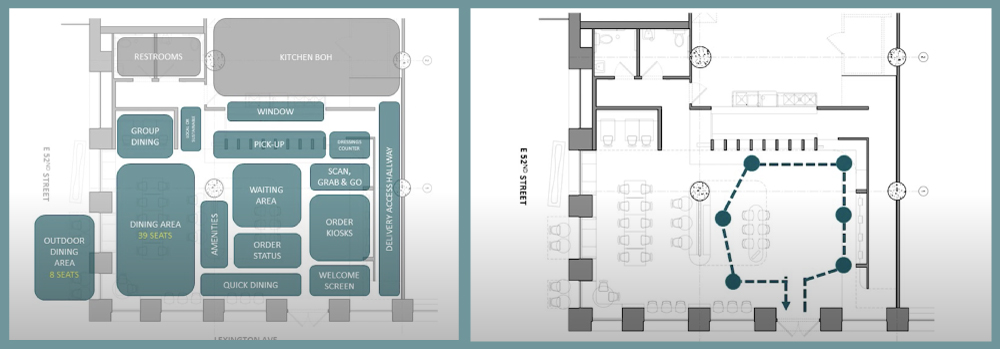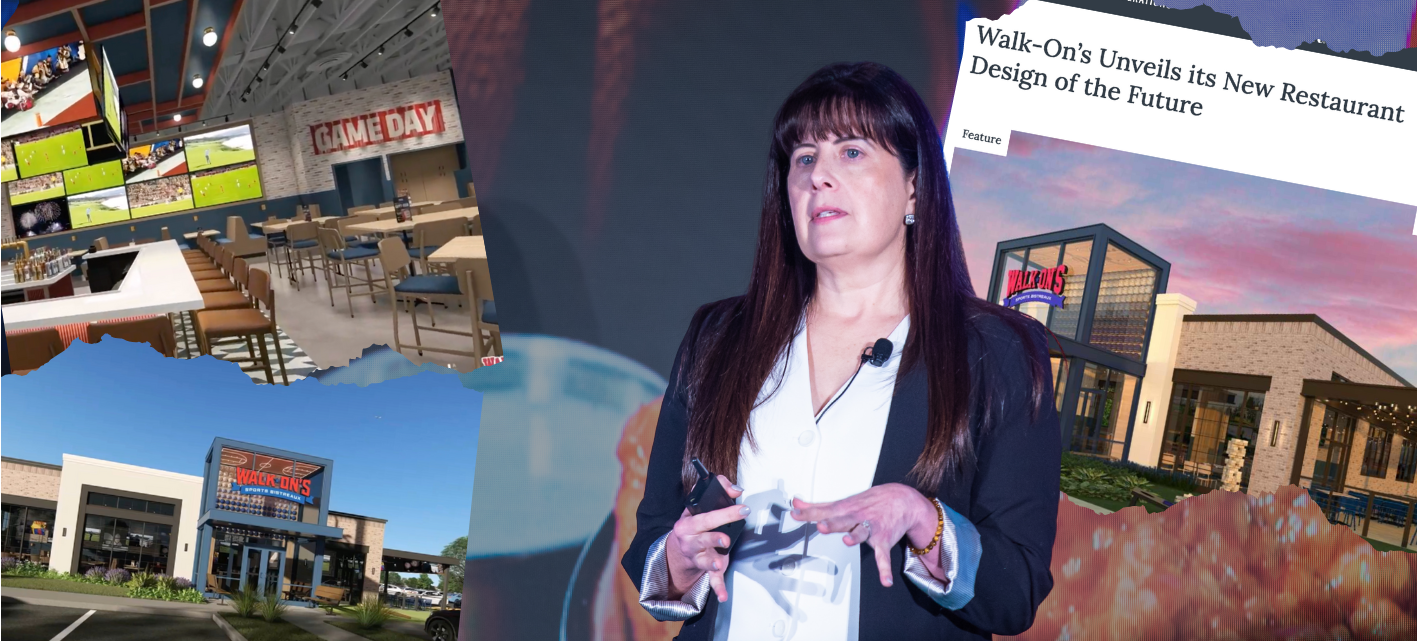Understandably, what constituted fast and convenient in 2001 when CHOPT debuted, is no longer the case.
While lines out the door once signaled a thriving, popular restaurant for passers-by and investors, they may now conjure ideas of long waits, complicated ordering and other inconvenient experiences… All things guaranteed to send today’s customer elsewhere.
“The world changed, and a long line became a deterrent,” said Tony Shure, Co-Founder of CHOPT, during a recent presentation at RestaurantSpaces. “We had to change to be a quick, seamless experience. We want to feed people really delicious, nutritious, exciting, fun, decadent salads in a slick way that you don’t have to look up from your phone or answer questions from another human being.”
With that in mind, CHOPT – with the help of growth and transformational consultant company Prophet — set out to create a digital-first restaurant that prioritized convenience, while maintaining elements of its theatrical assembly line background.
A Starting Point
CHOPT first began working with Prophet to update the convenience of its urban restaurants back in 2018.
“We had a lot of passion behind CHOPT,” Shure said. “We wanted that sewn into and reflected in the design. We wanted the customer to take a journey with us.” As a result: “Our passion for ingredients comes through here,” he explained. “That wasn’t easily accomplished. It’s reflective of the soul of the restaurant.”
Prophet was able to distill these elements to three categories that made sure experience was part of the preparation of food, without interrupting the flavor.

“We created a visual system, working on the app,” Peter Dixon, Chief Creative Officer for Prophet, said. “We started to extend that to the store design and update the feel. We were creating building blocks for what came next, digital order ahead and pick-up in store. But what happened to us all in 2020 changed how we had to think about the restaurants.”
Developing A New Prototype
With the pandemic underway, CHOPT and Prophet accelerated the design of the new restaurant, paying special focus to what was happening in the world.
“What our work has shown us is that we are moving to another generation of design,” Dixon said. “We need to pay attention to what is going on in the world. The future is already here, we have to make sure we are paying attention to it. The acceleration of the pandemic enabled us to take bolder steps forward and embark on a digital transformation.”
When considering the new prototype the companies focused on four things related to the customer experience: recognizing, responding, rewarding, and respecting.
Digital-First Restaurant
“We wanted to remain convenient and that’s one way to respect our customer,” Shure said. “We saw during the pandemic that the suburban market was slower to go digital whereas it was easier in urban areas. We realized we weren’t building for the urban store; we were building for everyone.”

Prophet took a typical CHOPT restaurant and zoned the area, seeing areas come to life as dedicated areas. The performative salad assembly line that once graced the store was removed and spaces were created for order-ahead salads, a kiosk area was put in for drop-by customers, and a grab-and-go section allows customers to add drinks and other items as they pick up their online orders.
“We wanted to make the journey seamless,” Dixon said of creating a circulation zone to keep people from congregating in one area. “We want customers to come in, find their name on the screen and let them know where their salad is so they can navigate and easily get out.”
While the performative salad assembly line was an important part of the original CHOPT restaurant design, it wasn’t as important for this new concept. Still, Prophet was sure to put in several sight lines to the kitchen so that customers know it’s not a machine making salads, but real people.
The restaurant can also accommodate dine-in customers with inviting tables and space for coworking. Additionally, a separate area is available for food delivery services, like DoorDash, eliminating a once disruptive process.

Posted by
Chain Restaurants Reimagined.
The Retreat to Reimagine Restaurant Development, Design + Technology.
April 12-14, 2026 | Miami, FL






-3.png)
-4.png)
-3.png)


Comments